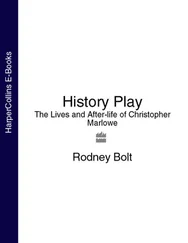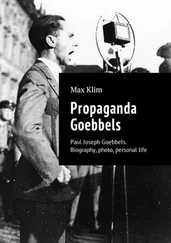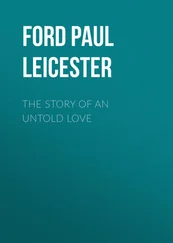Paul Vogt - Church Cooperation in Community Life
Здесь есть возможность читать онлайн «Paul Vogt - Church Cooperation in Community Life» — ознакомительный отрывок электронной книги совершенно бесплатно, а после прочтения отрывка купить полную версию. В некоторых случаях можно слушать аудио, скачать через торрент в формате fb2 и присутствует краткое содержание. Жанр: foreign_prose, foreign_religion, foreign_antique, на английском языке. Описание произведения, (предисловие) а так же отзывы посетителей доступны на портале библиотеки ЛибКат.
- Название:Church Cooperation in Community Life
- Автор:
- Жанр:
- Год:неизвестен
- ISBN:нет данных
- Рейтинг книги:4 / 5. Голосов: 1
-
Избранное:Добавить в избранное
- Отзывы:
-
Ваша оценка:
- 80
- 1
- 2
- 3
- 4
- 5
Church Cooperation in Community Life: краткое содержание, описание и аннотация
Предлагаем к чтению аннотацию, описание, краткое содержание или предисловие (зависит от того, что написал сам автор книги «Church Cooperation in Community Life»). Если вы не нашли необходимую информацию о книге — напишите в комментариях, мы постараемся отыскать её.
Church Cooperation in Community Life — читать онлайн ознакомительный отрывок
Ниже представлен текст книги, разбитый по страницам. Система сохранения места последней прочитанной страницы, позволяет с удобством читать онлайн бесплатно книгу «Church Cooperation in Community Life», без необходимости каждый раз заново искать на чём Вы остановились. Поставьте закладку, и сможете в любой момент перейти на страницу, на которой закончили чтение.
Интервал:
Закладка:
Paul L. Vogt
Church Cooperation in Community Life
PREFACE
Many books have been written during the past few years on the rural church. Some of these have given excellent concrete illustrations of methods that are proving successful in solving local problems. Others have discussed the general rural church situation. The rural life movement, however, has been so rapid that it is believed that a brief restatement of the place of the church in the rural life movement is desirable at the present time.
It has been the task and privilege of the writer for the past four years to be almost constantly in the field traveling from the Atlantic to the Pacific and from Canadian border to the limits of Florida and getting so far as possible first-hand impressions of rural church and community conditions. It is the purpose of the present essay to discuss some of the general problems in rural life presenting themselves to the religious forces of America, and to note some conclusions as to the next steps to be taken if these forces are to render the service in rural advance that it is believed is theirs to render. Suggestions as to local programs will be made only as evidence that when the church undertakes in an adequate manner the solution of problems whose solution is demanded of it, it receives both the moral and the financial support of the people served. The chapters on phases of the local program are intended only to help in preparing the way for the larger service contemplated.
As with individuals, so it is with institutions. It is difficult to discuss the place of different organizations in the rural life movement without arousing the antagonism of leaders in the respective organizations. It is hoped that the point of view held will be accepted as one of sympathy for the efforts of all organizations concerned and that the purpose of the discussion is to point the way toward a larger cooperation resulting from a better understanding of the work that may be expected of each.
Paul L. Vogt.CHAPTER I
SOME PRELIMINARY DEFINITIONS
When one begins to discuss a subject it helps very much if his readers know what he has in mind in the terms used. In the title selected for this text there are at least three words that need definition. Probably no reader will agree fully with any of the definitions given, but an attempt to define should at least help the reader to understand better in what sense the terms are used by the writer.
The term "community" has come into such common use that it might be assumed that definition is unnecessary. And yet when learned bodies get together to discuss community problems a large part of the time is usually taken up in attempting to define what the different speakers are talking about.
When the writer lived in the open country several years ago he went to Mifflin Center school and attended Wesley Chapel church. The schoolhouse and the church were located at the same crossroads, and these two institutions drew for their constituency from an area of about four square miles for the school and a somewhat larger area for the church. Brownstown school, to the south, Hendrickson's to the east, and Whetstone to the west made up other school communities. Pleasant Grove church, Salem, and Brownstown, with a different territory covered by each, made up church areas that did not coincide with the school areas bounding Mifflin Center school territory. In like manner, when trading was to be done, Upper Sandusky and Kirby, five and six miles away, were the centers to which everybody went, generally on Saturday afternoon, when friends from other sections of the county might be found on the streets. The boundaries of the trade center were thus much larger than those of either the school or the church. In politics, the center of interest of the particular township with which the writer was concerned was the old schoolhouse turned into a township house at Mifflin Center, the location of the church and school. The local political interests of the other communities mentioned were at the appointed places in the respective townships. The seat of justice was for some time in the parlor of the writer's father's residence, or in the front yard, to which court was occasionally adjourned when weather conditions permitted. In a larger way county courts were held at the county seat, as were other of the larger political activities.
One could go on indefinitely illustrating the boundaries of interests of various kinds. Some of them centered in the State House; others in the national Capitol; and many a wordy political battle was fought in the little country section over the question as to whether the protective tariff or the Democratic party was responsible for the hard times the farmers and others were suffering. There were even world interests involved, as during the Spanish-American War or the Venezuelan difficulty during Cleveland's administration.
This concrete illustration both raises the question, Which of these is the "community?" and also points the way to the answer. None of the groupings mentioned can be considered " the community." Yet each is " a community." A "community" is a psychical and not a physical thing. It can only approximately be bounded by physical lines. In the last analysis the true "community" is nothing more nor less than that group of two or more individuals who are bound together by a single interest. Thus two people living within sight of one another may be members of the same religious community and at the same time be absolutely separated from one another in their political affiliations. Also one person can at the same time belong to many "communities."
But this definition, if adhered to strictly, would lead to confusion of thought perhaps more serious than a less accurate use of the term. Careful investigation of the relation of the different psychic communities to one another reveals the fact that geographically the areas of individual community interest overlap one another; and that in the better organized regions the centers of interests coincide and it is only the boundaries of the several interests that are not coterminous. The Mifflin Center illustration given above is good in that it had the religious, educational and political interests centered at one physical spot. The social and recreational life of a large part of this local area also was centered here. In the other local groups mentioned there was a division of interest much more marked. A more practical definition, then, of a "community" would be "That aggregation of population which is bound together by a predominating proportion of its local interests."
If this definition is accepted, then an inspection of almost any local aggregation, in the open country at least, will lead to the conclusion that there are few groups of people who have any large number of local interests in common. Perhaps the most powerful force to be considered in determining what is an open country community is that of the social life. People in a given section habitually seek those with whom they are best acquainted when they get together for social affairs of interest outside the family circle; and it is only occasionally that the mass will go out of these habitual associations in seeking social relaxation. This social life may be sought at one time in the school, at another in the church, again at a picnic, or in the home of some one in the "neighborhood." But the dominating factor is acquaintanceship rather than religion or education or business.
Villages are more easily defined as to the number of interests holding the group together.
One principal objective in the modern local community organization movement seems to be to bring together at some central point the focal points of as many local interests as possible, thus strengthening the community bonds and increasing the community consciousness. As this end is achieved the necessity for the strict definition given above disappears and the "community" becomes that aggregation of people the majority of whose local interests have a common center . This is the sense in which the term will be used in this discussion.
Читать дальшеИнтервал:
Закладка:
Похожие книги на «Church Cooperation in Community Life»
Представляем Вашему вниманию похожие книги на «Church Cooperation in Community Life» списком для выбора. Мы отобрали схожую по названию и смыслу литературу в надежде предоставить читателям больше вариантов отыскать новые, интересные, ещё непрочитанные произведения.
Обсуждение, отзывы о книге «Church Cooperation in Community Life» и просто собственные мнения читателей. Оставьте ваши комментарии, напишите, что Вы думаете о произведении, его смысле или главных героях. Укажите что конкретно понравилось, а что нет, и почему Вы так считаете.












